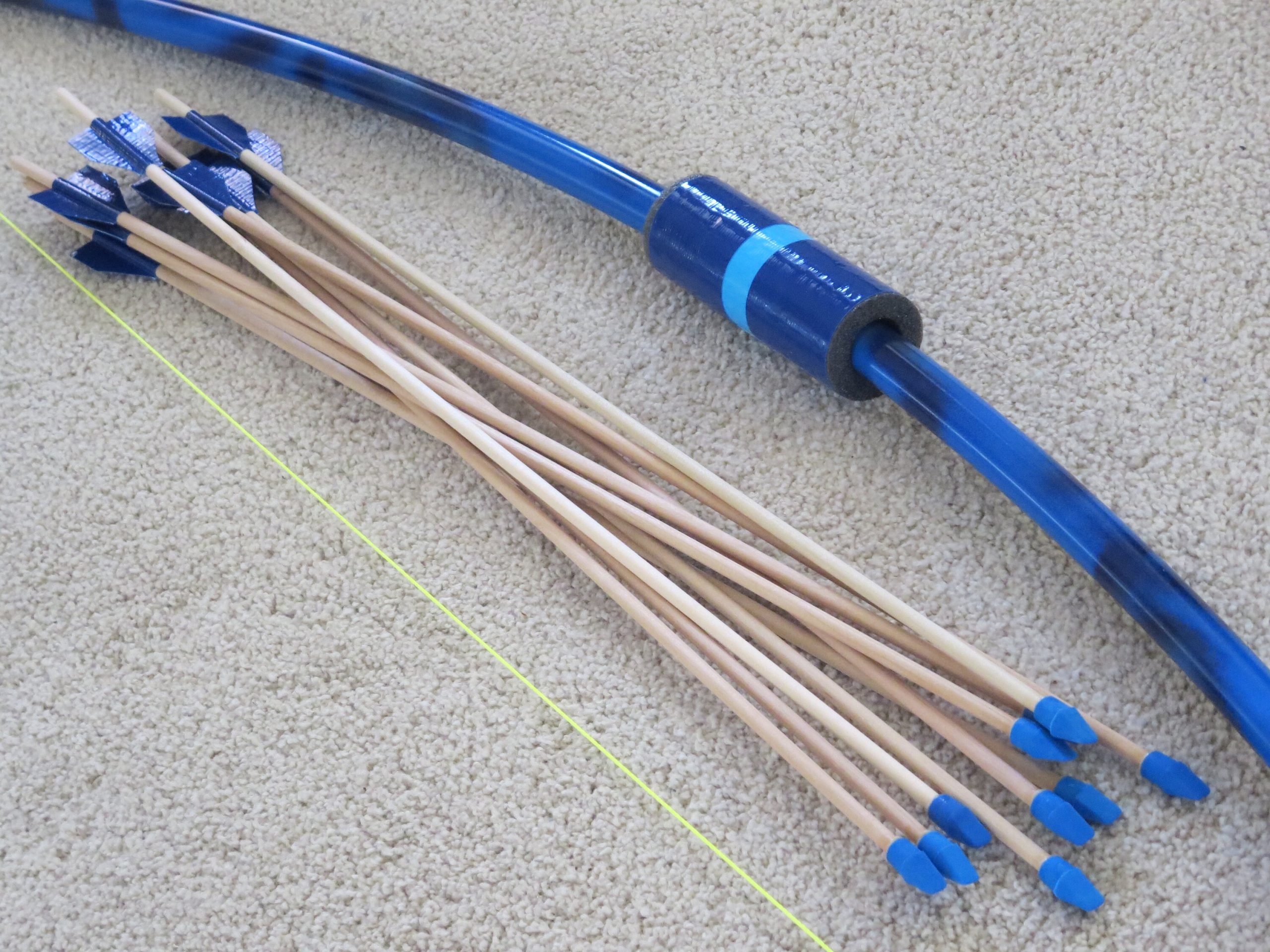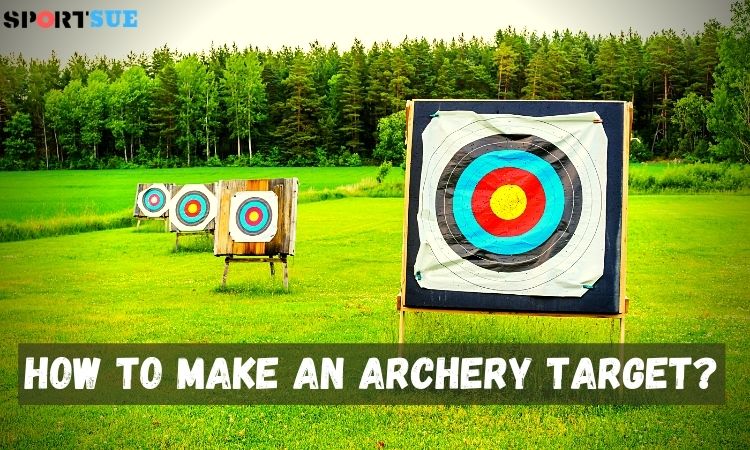If you need a bow but don’t want to spend it, you can make one yourself at home with a PVC pipe. The bow will not be tough to make and will be very good at work. While it may not be as strong as a professional, it will play an important role in fulfilling your hobby.
The making procedure of PVC pipe recurve bow will not be easy or nor be hard. It would help if you were a little DIY expert, and after that, you will be able to make a bow at home.
Here in this post, We’ll show you two different ways to make a perfect PVC bow with the step-by-step guide. Lastly, you will know the safety management with PVC bow and arrow instructions. So, Let’s gets started.
Super Way- 1, You can follow?
Instruments Need:
Here We will need some tools to make the bow appropriately. However, we’re making a bow with a PVC pipe. The first thing we need a .75inch diameter of a PVC pipe. The pipe should be 5ft. And need another pipe that should be 32mm/1 inch in diameter as per as coupling and tee size.
The next materials we need are a PVC tee 32mm and a PVC coupling 32mm. For pipe cutting and string, use a simple hand saw and nylon rope. Fire will be needed to make the PVC flexible.
How to make it? (Step by step Guide)
#1 First, connect the Pvc tee and Pvc Coupling.
For the pre-installation of the Pvc pipe, you need a 32mm Pvc tee and coupling. Connect both materials. You must need two PVC coupling and one PVC tee to reform the body of the bow.
#2 Enter the 32mm pipe onto the PVC Tee-coupling hole.
After connecting each portion of PVC materials, take a 32mm pipe of the same length according to the size of PVC tee and coupling. After insertion of the 32mm PVC, try to tight enough to move the jointing spot.
You May Like How to make an archery target?
#3 Insert the .75mm 5ft pipe.
When you completely connect the tee and coupling pipe and insert of 32mm diameter pipe. You have to pick the 5 ft and 3/4 inch diameter pipe and press up against it onto the 32mm pipe. This is the simple step, and the pipe size is constant for all diameter. So you need not worry about it anymore.
#4 Set the Pvc tee in the center.
The step of positioning in the center is important. Because the next step depends on the pipe’s correct positioning, put the pipe into the central position of the connector. If you don’t get the proper length, try to pick a measurement scale.
#5 Use Fire flame for flexibility.
Form the above step, the fire flaming is very much important for the bow making job. If you have to take any wrong decision during the heat, this could ruin the bow structure. So what will you do?
For this job, You need a flaming instrument. If there is any gas stove, this could be better than anything. However, if you don’t find anything else, pick a heating instrument that makes flame and heat.
For building and curving the PVC bow, take the bow upon the fire flame. Then start rotating and give time to flexible enough to curve its body. After curving a decent size, the next step is to reform the body and stat flatening.
Also Read: Bow AMO Length Calculator: How To Measure Recurve Bow String Length?
#6 Press up and minimize the diameter.
When the heat spreads to the PVC, you must press up with a flat wooden part. After gentle pressure, the pipe will change its size and be suitable for the bow. When the job is done, Cool down the pipe and be prepared for the stringing.
#7 Stringing and final touch
Now you have come to the final part, collect a nylon rope, or choose a power cable for strings if you don’t find anything like nylon (Maybe Can use shoe laces). Tie up the string with the bow apart from an inch of the end of 5ft PVC.
You have done the right job. Now it’s time to check up the ability and flexibility. Go outside and check the potential pressure of this PVC recurve bow.
Super Way- 2, You can follow?
The method-2 is easier than the first one. Don’t need heat, PVC tee, or coupling. Investing a short time to get the bow. We give the bow-making mechanism below.
Essential Materials:
- 5 ft long and 1-inch diameter of Pvc Pipe.
- 2 piece 2-inches long 75mm diameter of another PVC pipe.
- Cutting blade.
- Stringing rope.
How to make it? (Quick step)
#1 Initial preparation of PVC pipe.
For this simple bow making step, you need a 5ft long 32mm of PVC pipe. Check if there any dents or cracks. This could be a reason for breaking the bow.
#2 Enters the 75mm pipe onto the end of the main pipe.
Generally, you can make the PVC bow without any extra pipe. But the extra 2-inch pipe will provide you with super strength during the job.
Now insert the 2-inch pipe into the main pipe. If there’s any problem entering, try a little heat for flexibility and next, it will be easy to accomplish the task.
#3 Carefully cut the edge to the end portion of the PVC.
After a perfect insertion of internal PVC, then the next step is to make a span for tieing the string. Use a cutting blade and make a V-shape cut on the PVC layer. The two-layer portion of the end will be hard enough to broken.
#4 Tie up the string
Tightening the string is a simple task. Take a long nylon rope and make a loop with the ending edge. Now go to the other end of the bow and bend it as much as you need to. Boom, you just made your bow.
Arrow making tips:
Making arrows with PVC pipe is a big hassle because making a bow with PVC pipe is not as easy as making a bow.
Also, low diameter PVC pipes are thinner and more flexible and soft, making it almost impossible to make arrows with them.
But yes, if you can make the right arrow with the tree branches around you, you can make a good pair by matching your bow with it.
However, it would be advisable to buy ready-made arrows and use them if you want to make them at home.
PVC bow and arrow instructions?
Since the bow made at home, some safety measures need to be followed, so here are some explanations for the safety that we can follow during this work.
- Avoid excess pressure while curving the bow.
- Use hand gloves while heating the PVC.
- Give a decent pressure to flat the PVC pipe during the making.
Conclusion:
If you follow all the above steps and try to make a bow following all the instructions, you will definitely succeed.
But in this case, the bow you are making may not be as strong as you expected, so if you want to make it as a hobby, you can try it.
And of course, it is important to follow the instructions given above; otherwise, you may fail to make a bow despite repeated attempts.
Others Related Article

General Manager & Auditorial Head.
Killian Jake is a World Sports Traveler and hobbyist sports lover. By exploring different sorts of playing modules like indoor, outdoor, and many more. As for professionalism and writing, it’s helpful to give you the right suggestions on different games and sports.





